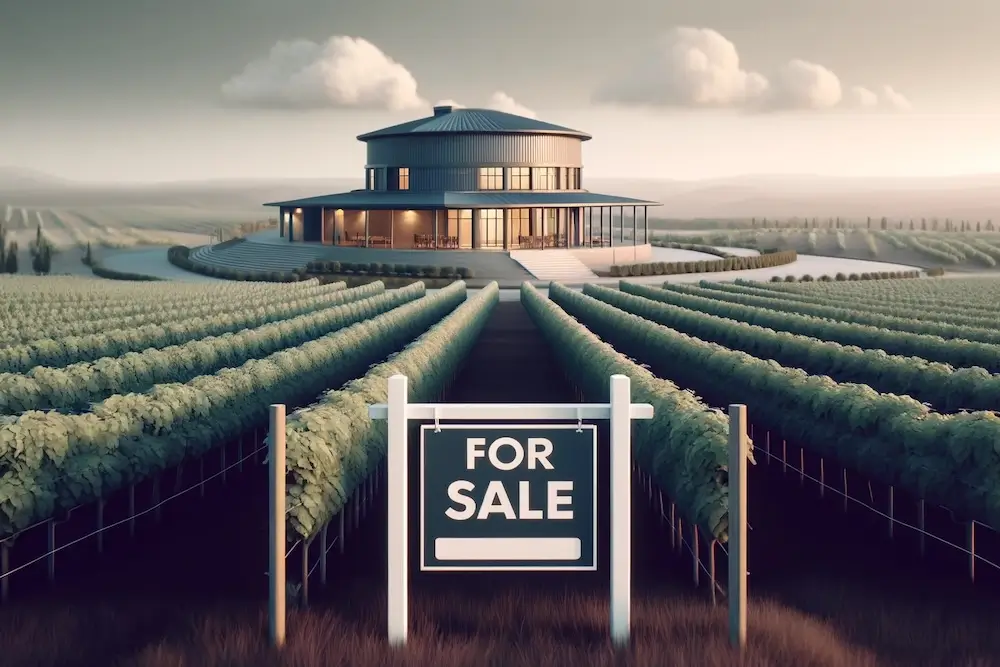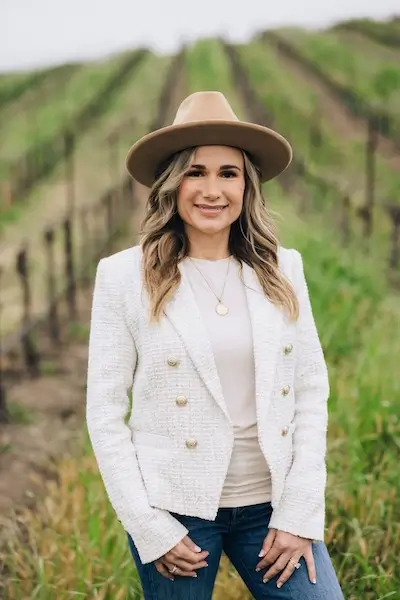Selling a Californian Winery? Get Ready for a Reality Check


The recent sale of Duckhorn Vineyards for $1.95bn to private equity firm Butterfly must be giving hope to people across California. Especially coming just one year after the sale of Daou Vineyards to Treasury Wine Estates for almost $1bn.
People aren’t just drinking less wine. Winery owners are also ageing out of the business, as people who founded wineries between the 1970s and 1990s are now looking to retire — and many will hope to make a windfall.
“There will be a lot for sale,” says Jennifer Heinzen of Vineyard Professional Services, one of the country’s top vineyard brokers, who sells to investment funds and high-net-worth individuals. “The ones that are actually going to be successful are going to be few and far between.”
She says that wine companies are now so large, that mid-sized players get “lost in the middle. The smaller ones can be lifestyle boutique buyers, but there haven’t been a lot of successful sales recently.”
What’s happening in the market
Heinzen says her company is associated with a vineyard management company, so she can see grape prices. “There’s definitely an oversupply,” she says. “The more premium markets are less affected, but even Napa Valley this year — the most premium market in California — was affected.”

Vineyard Professional Real Estate
When grape prices are low, it can be difficult for vineyard owners to remain economically viable, which affects real estate values. Heinzen says that the properties she works with are very desirable in terms of lifestyle, but where “grapes and vineyards used to add a lot of value — sometimes as much as $100,000 per acre — now it’s almost a negative if it has a vineyard, depending on the location.”
Nor is there much of a market for vineyards that aren’t in prime condition, because “it takes such an investment and such a wait for the crop if it needs to be replanted or revamped. There’s just not that kind of money around right now, because of the price of grapes and the uncertainty.”
For well-maintained vineyards in good locations, however, wineries are still interested in securing grape supplies.
Heinzen says, however, she feels as though the market is at its bottom, “so hopefully we’re on our way out.”
Slow sellers
Mike Fisher is a partner in Global Wine Partners, a specialist in mergers and acquisitions, valuations, corporate finance, and wine business advisory services — and an expert at valuation.
Before he will agree to sell a property, he looks at the financial statements. “What assets do you own and how profitable are you? If we want to put together a package of information, there have to be realistic projections,” he says. There are many wineries he won’t represent because “they’re not profitable, or not profitable enough.”
If there’s no goodwill or brand value, “then maybe their best thing to do is quit making wine and sell out their inventory through the normal course of business.” Then, once it’s sold, “you basically shut the winery down.”
Fisher says a lot of people believe they can sell their unprofitable brand to a bigger winery, hoping the bigger company will add it to their portfolio and make it work.
If there’s no goodwill or brand value, then maybe their best thing to do is quit making wine and sell out their inventory through the normal course of business.
But too many wineries, particularly smaller ones, haven’t developed good routes to market. “They sell most of the wine direct to consumer, which makes it difficult for a buyer to grow that brand.”
The reason DTC can be a negative is that a larger company will have to fold it into their own sales channels, and getting distribution for an unknown wine is difficult.
Medium-sized wineries are often in a better place, because more of their wine goes to distributors. “And of course, that’s a problem because there are fewer and fewer distributors and you don’t have a lot of leverage if you’re a mid-sized winery. Plus, the distributors expect you to pay them to sell you wine — they call it a depletion allowance [of] as much as 15% to 20% of the selling price.”
Fisher admits he’s painting a bleak picture, “but it’s a tough business.”
Heinzen notes that while many DtC brands appear to be making money, there may be no value in them, because the owners weren’t taking a salary, or the business is not transferable. She also won’t represent wineries or vineyards in fringe areas.
Easy sellers
1. Location
What Heinzen looks for is location, location, location.
“There are a lot of boutique wineries or converted horse barns that aren’t necessarily legitimate production facilities,” she says. “Those can be tricky, but they can also have alternative uses — it could go back to being a barn, or become something else.”
Wine tourism facilities can also be a plus.
2. Gross profit
Fisher says one of the first things he’s interested in is gross profit — the difference between total revenue and the cost of goods sold.
“I’ve seen wineries with high-priced wines that can be 60% to 70% gross profit. If you can be in that position, then you can make some money,” he says. “That’s a strong brand, that’s priced well and there’s enough demand that they may not even have to pay the distributors as much to sell their wine. But it does need distribution — it can’t all be direct-to-consumer.”
He adds that operating expenses should never exceed 25%. “All the expenses related to running the winery — everything other than producing the wine — should not exceed 25%. We always focus on what we call operating income, which is the 25%, because that’s what’s important to potential buyers.”
3. Intangible value
Another important thing is the intangible value, or non-physical assets like brand value and distribution arrangements. “You’ve got real estate, you’ve got various inventory components of assets, but if you really want to maximise value, you need to have intangible value, in excess of the value of the hard assets,” he says.
Fisher says that only the upper 10% of wineries fit this category. “High revenue per case, strong brands, and efficient operations,” he says.
“If it’s a strong brand that’s profitable, there’s always going to be interest.”
When getting ready for sale, Fisher says the most important thing a winery owner can do is have all their information in order, so that when would-be buyers have a question, the answer is close to hand.
“If you’ve got some time, you may be able to increase the profitability.”
What every winery needs
Fisher says that many smaller wineries make the mistake of saving money on accounting expertise. “They have a part-time bookkeeper, or maybe an administrative person who’s doing their bookkeeping.” While that person may be entering everything into QuickBooks religiously, they may not know how to enter things correctly. “I get financial statements all the time that are not very meaningful, because there are so many things posted incorrectly.”
Wineries should hire a professional accountant with wine experience. “And you probably need to hire somebody to do some realistic financial projections, to know where you’re going and to have a plan. Many don’t have a plan.”
Fisher says people only bring accountants to prepare a tax return, when what’s needed is management accounting. “Historically, you need a number of years of reviewed financial statements, if not audited.”
Preparing for sale
If a company like Global Wine Partners does agree to take on a winery, they will create an offer memorandum, to show a buyer what they’re getting. Fisher says they earn a contingency fee that’s anywhere from 2% to 5%. “We usually start with a retainer payment of $25,000, to make sure the seller is serious, even though we have a contingency fee that might be substantially more than that. But that gives us some money to put together the offer memorandum and set up the due diligence.”
But just because he takes a winery on is no guarantee that it will receive a high price. “Everybody’s got these expectations that they’ve created all this value. And then we’re saying, ‘no, you haven’t’. Even if we take this on, you’re going to get a lot less than you think it’s worth.”
Heizen agrees that too many people have unrealistic expectations, believing their properties are worth millions of dollars when they might be worth a mere quarter of that.
“The inventory, in many cases, isn’t worth a lot because it’s going to cost you a lot of money to sell the wine,” she says. “So it’s sometimes hard to get to the right price — but at the right price, there are buyers for everything.”
Where to next?
Fisher believes that what’s happening is a correction. “We’ve got too many acres now, and too much production capacity. There are going to be some vineyards that will go to other crops. Some of the production facilities that are old and inefficient are going to be abandoned or sold for something else.”
Fisher predicts it will be Central Valley where the vineyards are most likely to be removed, and perhaps in Eastern Washington. But he’s positive about Oregon and California’s coastal regions.
He also believes there will still be plenty of people buying vineyards and wineries with aspirations of building a lifestyle business. “There are still people that want to get into the wine business. It’s too attractive for people.”
“Unless you need the tax write-off, don’t just go out and buy a winery. Learn the business slowly.”
Finally, he says there may be a reset coming, “but I think people are going to continue to drink wine. Premium wines are still going to be something that people are going to want to buy.”
Heizen says she believes things will pick up after the election. “I feel like Spring is going to be a really decent market. But I think it’s like anything — the small family-run businesses are getting squeezed out. Those are the ones that will probably disappear, because those are the businesses that aren’t really sellable.”
For people determined to get into the wine business, Heizen says they should start as a grower first. Then, if you want to develop a brand, use a custom crush. “Unless you need the tax write-off, don’t just go out and buy a winery. Learn the business slowly.”
But, if you happen to be a billionaire needing a tax write-off, rest assured: “It’s a really good time to buy.”
